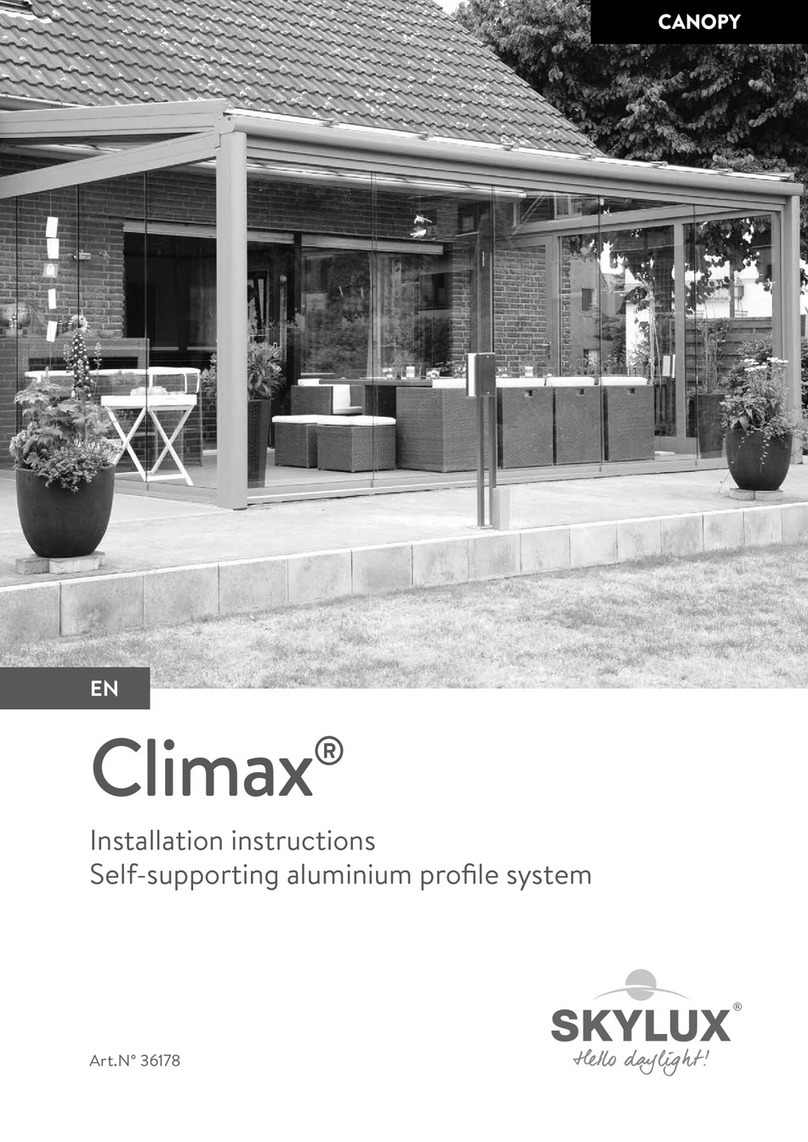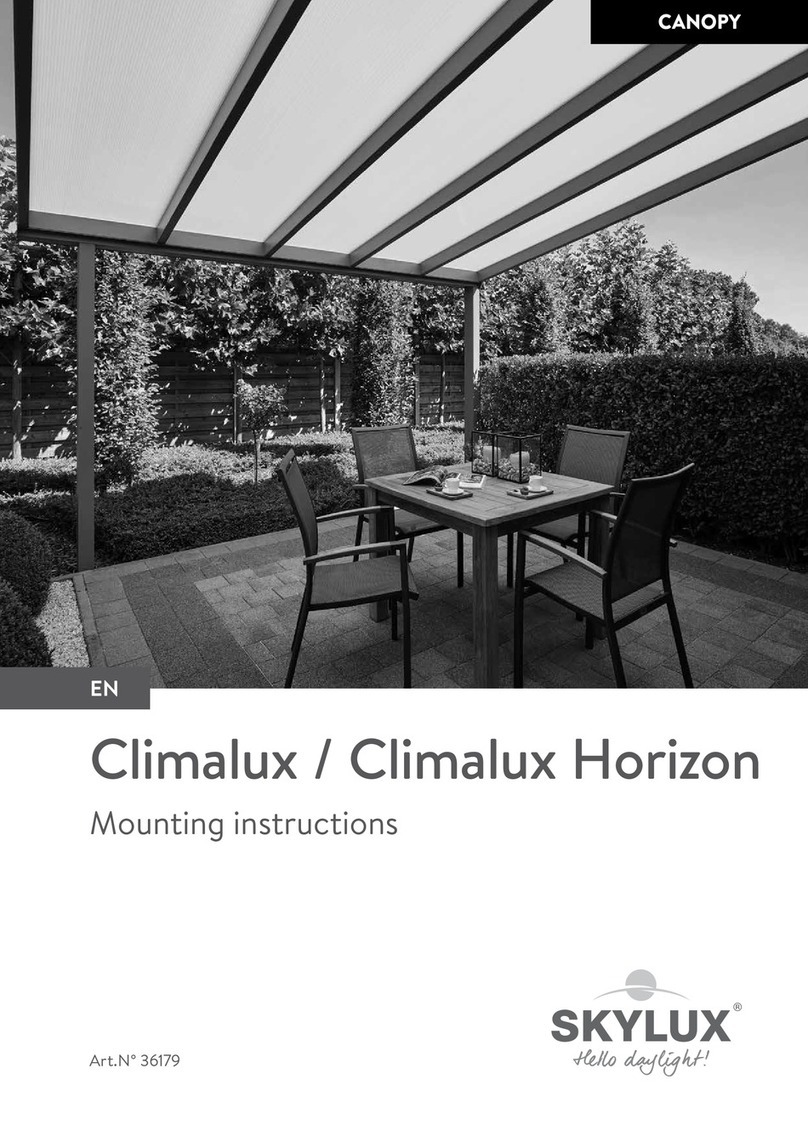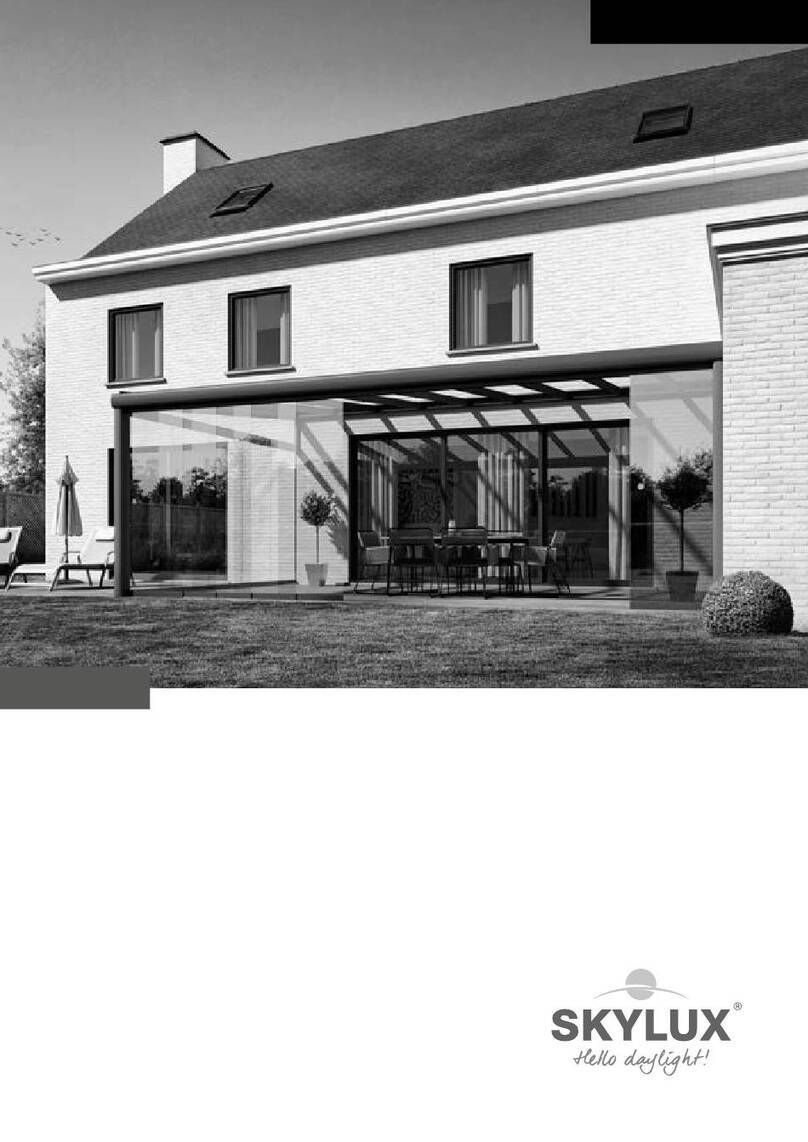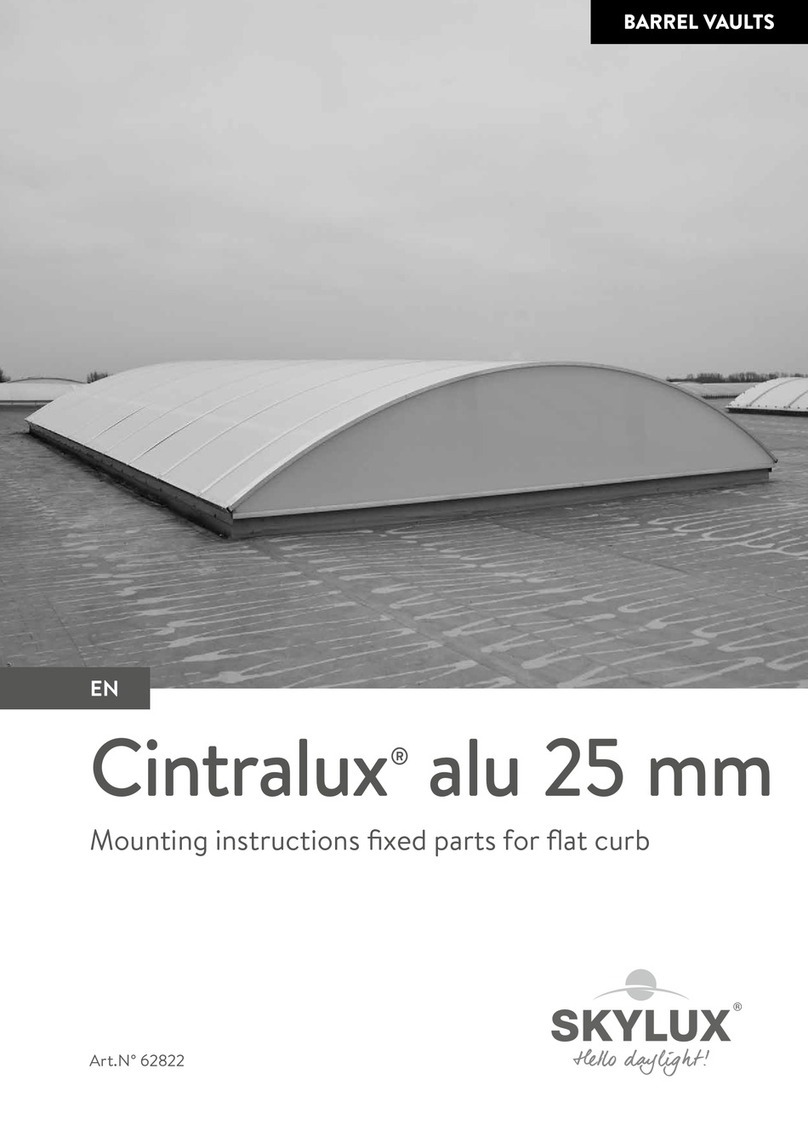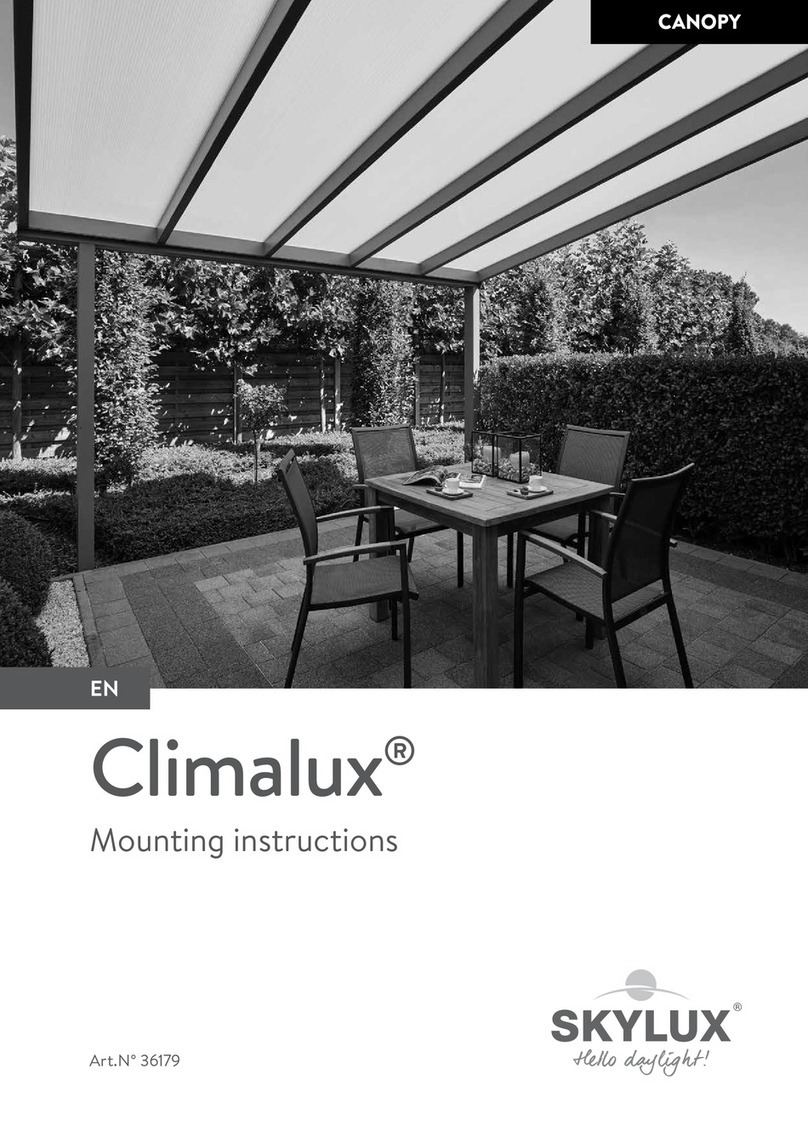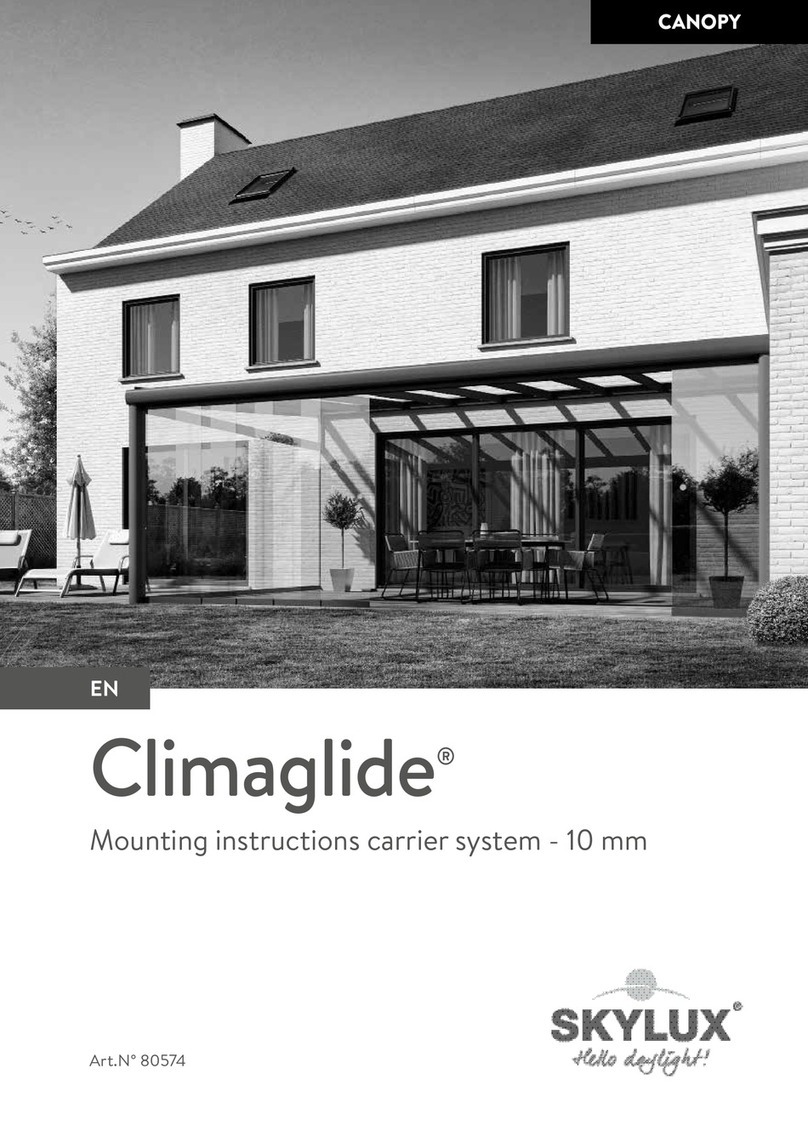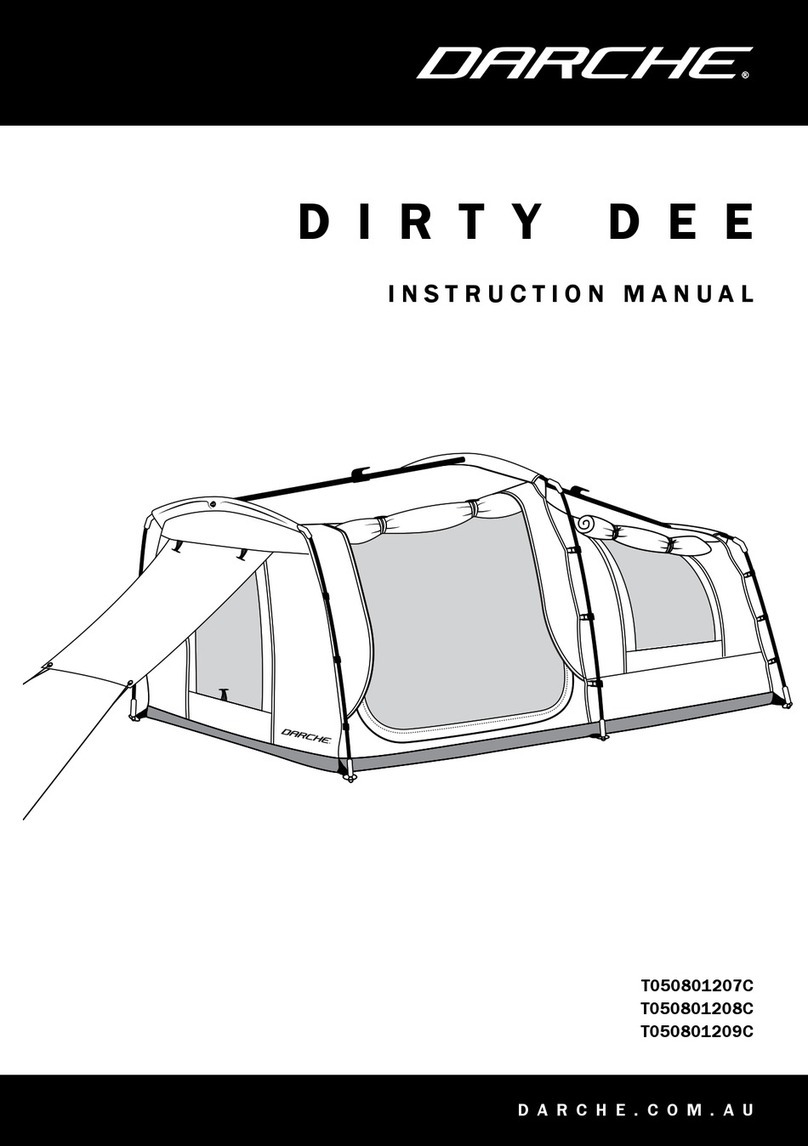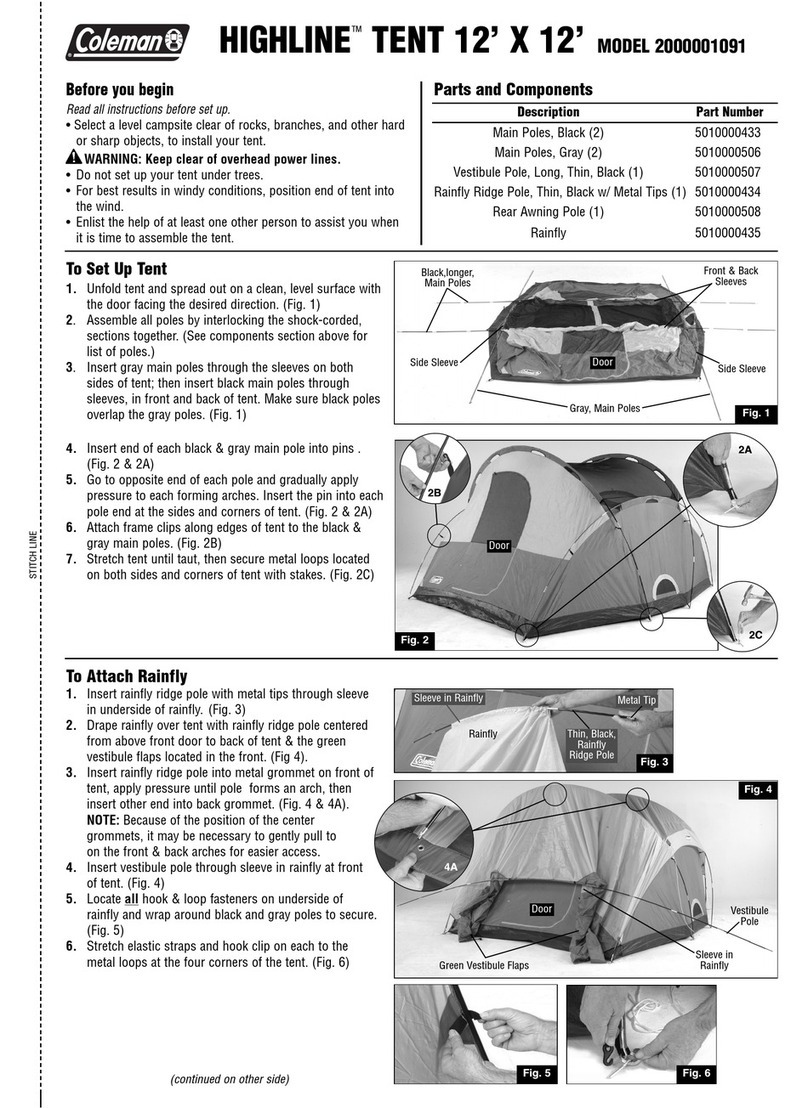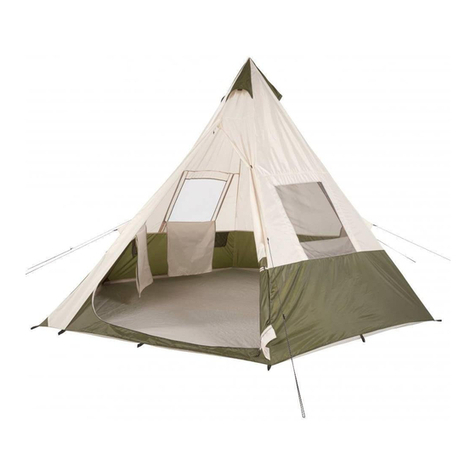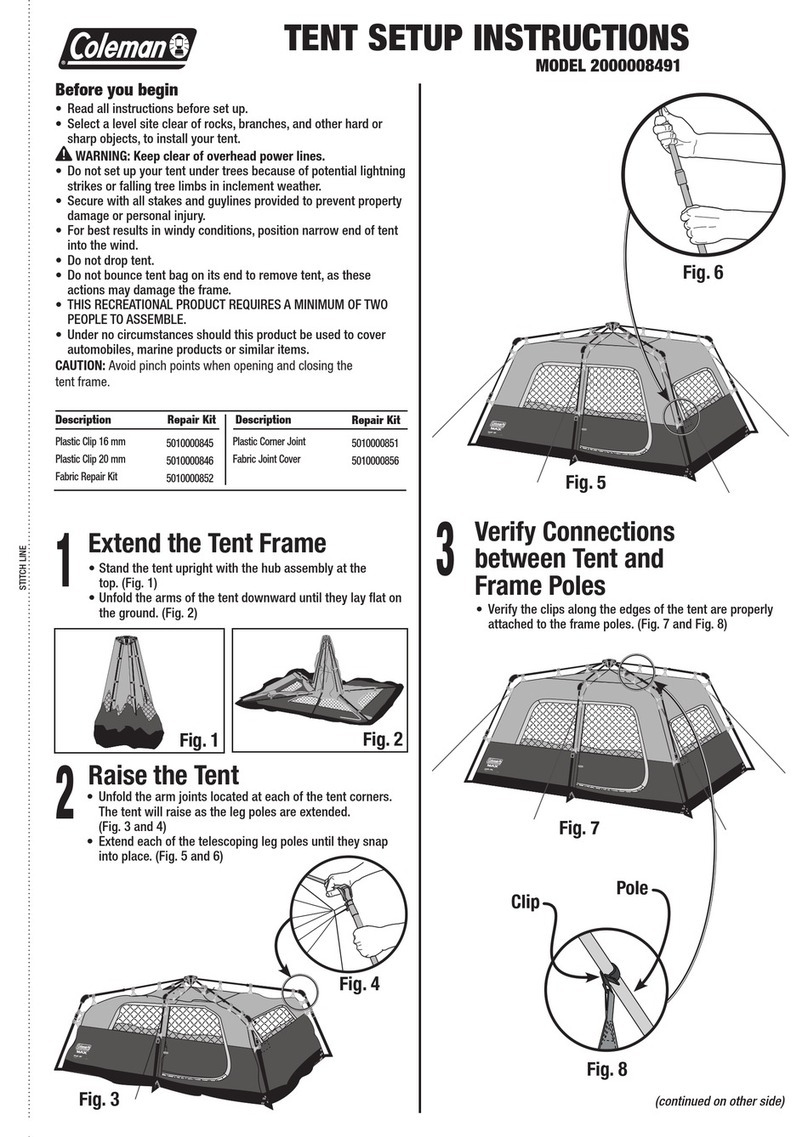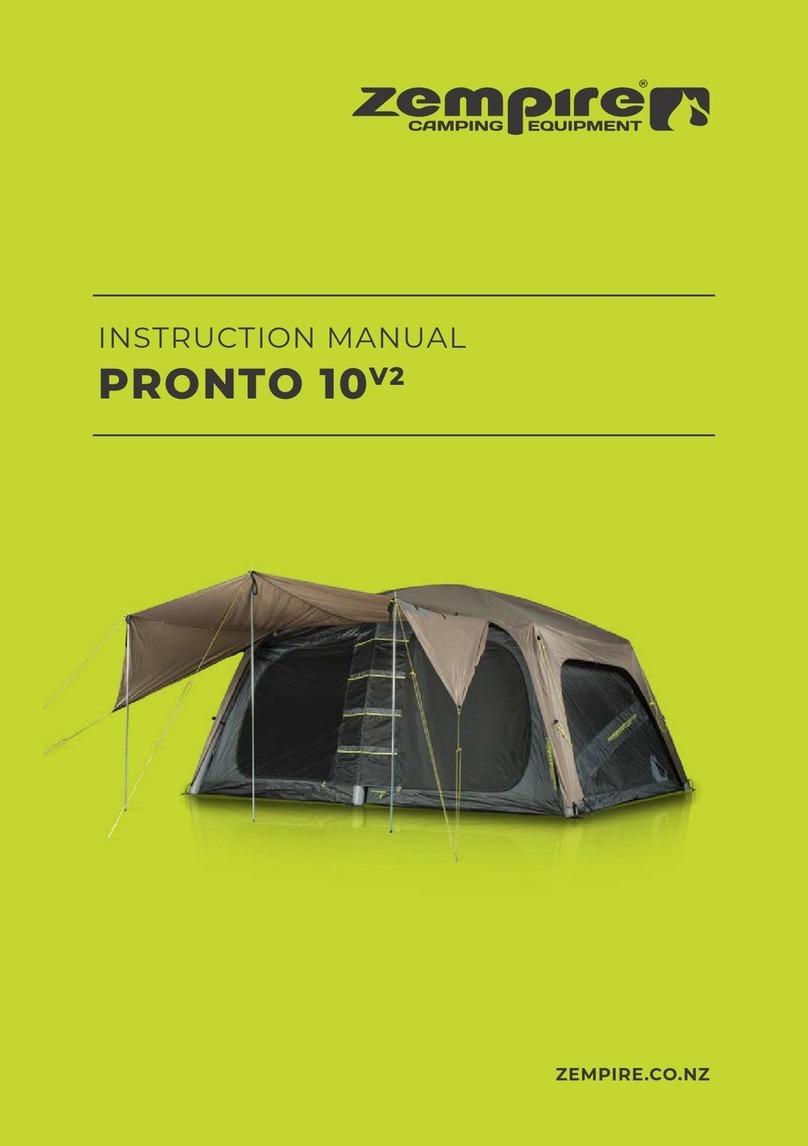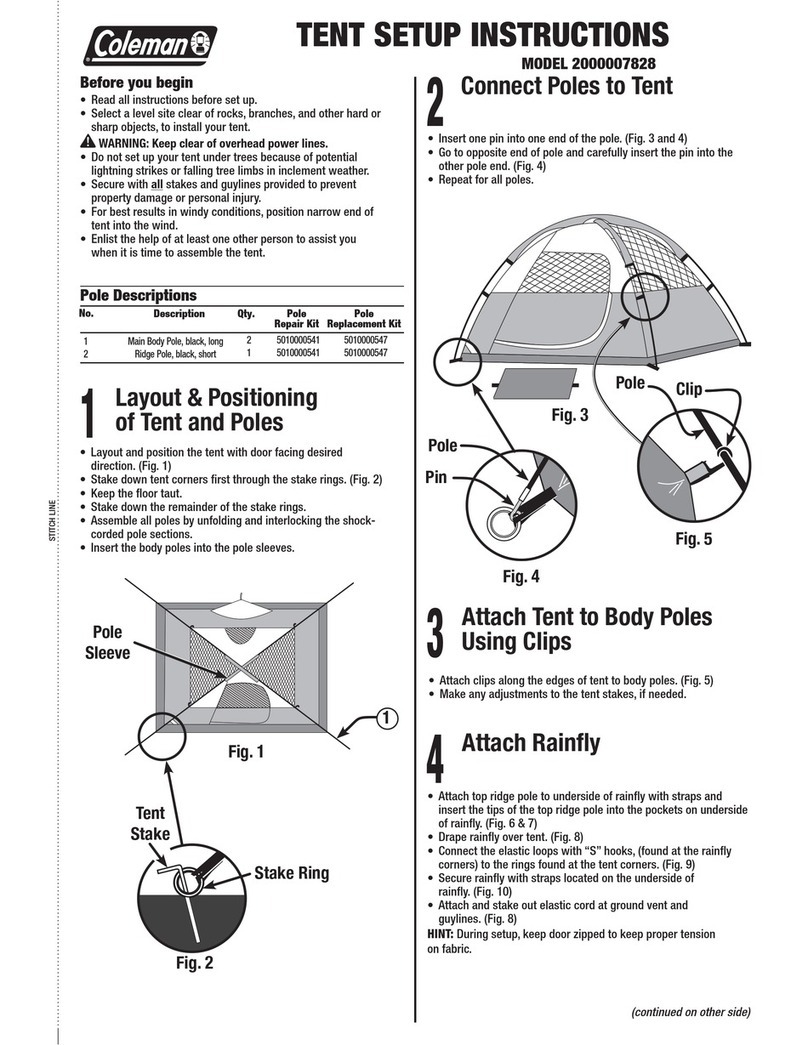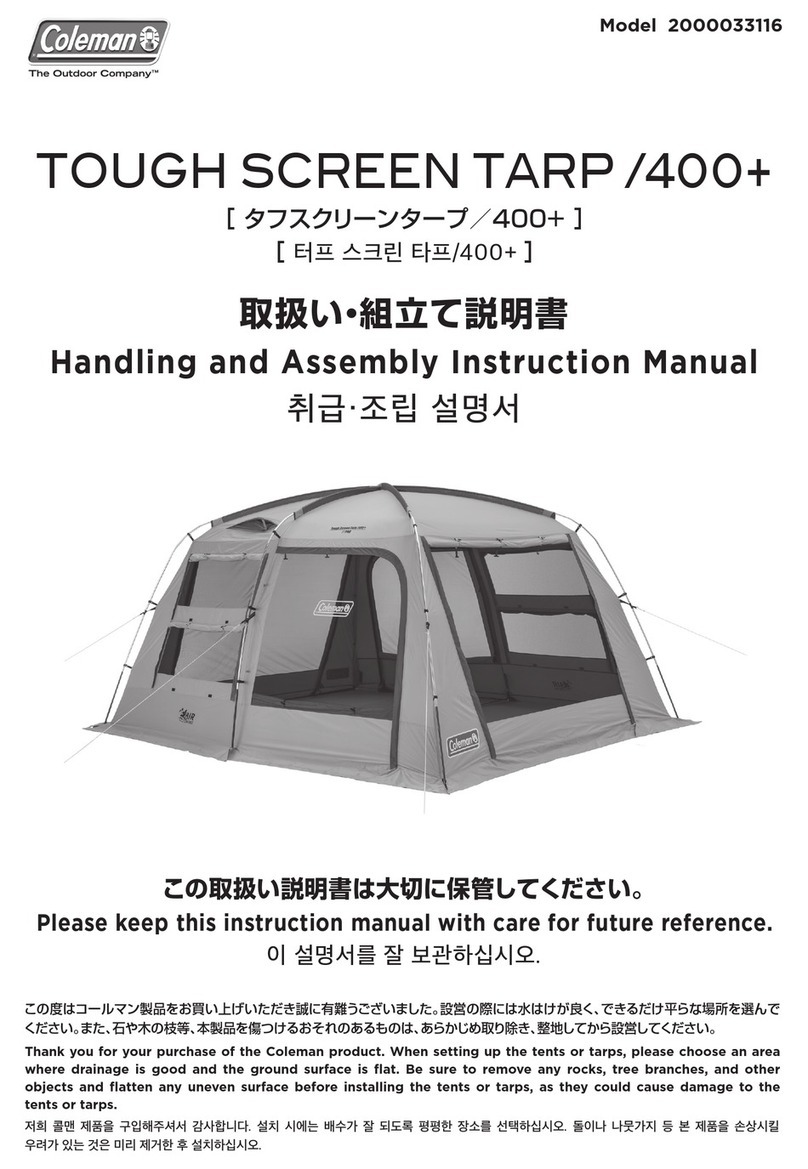SKYLUX Climalux User manual

CANOPY
EN
Art.N° 36179
Climalux / Climalux Horizon
Mounting instructions

E_MH_Mounting_instructions_Skylux_Climalux_ClimaluxHorizon 27/04/2023
2/60
1 CONTENT P. 2 3
2 SAFETY P. 4 5
3 GUIDELINES P. 6
4 LOAD CAPACITY GRAPHS P. 7
4.1 GENERAL CONSIDERATIONS P. 7
4.2 LOAD CAPACITY OF RAFTERS IN FUNCTION OF
PLASTIC SHEETS OR GLASS P. 8
4.3 LOAD CAPACITY OF GUTTER BEAMS P. 9
4.3.1 FOR ROOFS WITH PLASTIC SHEETS P. 9
4.3.2 FOR ROOFS WITH GLASS P. 10
5 OVERVIEW INSTALLATION VARIABLES P. 11
5.1 APPROACH MOUNTING INSTRUCTIONS P. 11
5.2 CODES FOR THE POSITIONING OF THE ELEMENTS P. 11
5.3 SLOPE P. 11
5.4 FRAME CONNECTIONS P. 11
5.5 HORIZONTAL BEAMS P. 12
5.6 ROOF PACKAGE P. 12
5.7 POST COVERS P. 13
5.8 GLAZING EDGE PROFILE P. 13
6 MEASURING A WALLSUPPORTED CLIMALUX ROOF P. 14
6.1 OVERVIEW ELEMENT POSITION CODE P. 14
6.2 MEASURING P. 15
7 MEASURING A FREESTANDING CLIMALUX ROOF P. 17
7.1 OVERVIEW ELEMENT POSITION CODE P. 17
7.2 DETAIL FOUNDATION & HEIGHT P. 17
7.2.1 RIDGE BEAM H1 IN LATERAL VIEW P. 17
7.2.2 GUTTER BEAM G1 IN LATERAL VIEW P. 18
7.3 OPTIONAL GROUND FOUNDATION P. 18
8 OVERVIEW PROFILES AND PARTS P. 19
9 PREPARATION P. 24
9.1 WALLS P. 24
9.2 FLOOR P. 24
10 ASSEMBLING THE POSTS P. 25
10.1 POST TYPE: PX P. 25
10.1.1 PX + PU + PV: INSTALLATION ON GROUND /
GUTTER WITH BRACKET P. 25
10.2 POST TYPE: PXLX P. 25
10.2.1 PXLX + LB150: INSTALLATION ON GROUND WITH
BRACKET P. 25
10.2.2 PXLX + PS01 140X30: INSTALLATION WITH ANCHOR;
FOUNDED IN CONCRETE / ON THE GROUND P. 26
10.2.3 PXLX: FOUNDATION WITHOUT ANCHOR P. 26
10.2.4 XLX + LB150 + C72: INSTALLATION ON GUTTER WITH
BRACKET + BEAM P72 IN CASE OF BRACKET C72 P. 27
10.2.5 PXLX + PCLX / PCLXLX: POST COVER OPTIONS P. 27
10.3 POST TYPE: PGDX P. 28
10.3.1 PGDX + PUX + PV: INSTALLATION GROUND & GDX P. 28
10.3.2 PGDX + PS: INSTALLATION WITH ANCHOR;
FOUNDED IN CONCRETE / ON THE GROUND P. 28
10.3.3 PGDX: FOUNDATION WITHOUT ANCHOR P. 29
10.3.4 PGDX + C110: INSTALLATION CROSSBEAM GDX P. 29
10.3.5 PGDX + C110 + C72: INSTALLATION HORIZONTAL
BEAM GDX & BEAM P72 AND WITH BRACKET C72 P. 29
11 ASSEMBLING THE HORIZONTAL BEAMS P. 30
11.1 WALLSUPPORTED BACK PROFILE P. 30
11.1.1 PREPARATION P. 30
11.1.2 INSTALLATION P. 30
11.2 SIDE BEAMS W1 & WN: TYPE P72 P. 31
11.2.1 P72 + PU: SIDE BEAM STANDARD VERSION P. 31
11.2.2 P72 + C110: SIDE BEAM REINFORCED VERSION P. 31
1 CONTENT

27/04/2023 3/60
E_MH_Mounting_instructions_Skylux_Climalux_ClimaluxHorizon
11.3 GUTTER BEAM G1: TYPE GX P. 31
11.3.1 GX + VS:
GUTTER WITH REINFORCEMENT PROFILE
P. 31
11.3.2 GX + PU: INSTALLATION ON POST PX P. 32
11.3.3 GX + LT150: INSTALLATION ON POST PXLX P. 32
11.3.4 GX + LT150 + VTVS: INSTALLATION ON POST PXLX P. 33
11.3.5 GX: COUPLED GUTTER P. 34
11.3.6 GX + GLX / GR: GUTTER WITH COVER P. 34
11.4 GUTTER BEAM G1: TYPE GXLX P. 35
11.4.1
GXLX + V1243: GUTTER WITH REINFORCEMENT PROFILE
P. 35
11.4.2 GXLX + LT150 + PT150: INSTALLATION ON POST PXLX P. 35
11.43 GXLX: COUPLED GUTTERS P. 36
11.5 RIDGE BEAM H1 & ROOF OVERHANG BEAM O1 P. 38
11.5.1 GDX + IP140 / V14105: BEAM WITH
REINFORCEMENT PROFILE P. 38
11.5.2 RIDGE BEAM H1: GDX + MX / MX32 P. 38
11.5.3 OVERHANG BEAM O1: GDX P. 39
11.5.4 GDX + PUX: INSTALLATION ON PGDX P. 39
11.5.5 GDX: INSTALLATION ON PGDX + C110 P. 39
11.5.6 THE CONNECTION OF 2 SUPPORTS IS
SUPPORTED BY THE POST P. 40
11.5.6 GDX: COVER PROFILE P. 42
12 PREPARATION OF THE FRAME P. 43
12.1 OVERVIEW P. 43
12.2 INSTALLATION W1 & WN P. 43
12.2.1 W1 / WN WITH C72 BRACKETS P. 43
12.3 INSTALLATION R1 + R2 + RN P. 44
12.3.1 OUTLINING THE STRUCTURE P. 44
12.3.2 FINISH P. 44
13 ASSEMBLING THE ROOF PACKAGE P. 45
13.1 PARTS P. 45
13.2 PREPARATION P. 45
13.3 RAFTER SPACING P. 45
13.4 INSTALLATION OF THE RAFTERS P. 46
13.4.1 VERSION 1: GUTTER GX P. 46
13.4.2 VERSION 2: GUTTER GXLX P. 47
13.4.3 VERSION 3: ROOF WITH OVERHANG P. 47
13.4.4 SPACERS P. 48
13.5 FINISH P. 48
13.5.1 WALL PROFILE P. 48
14 OPTIONS P. 49
14.1 LIGHTING P. 49
14.1.1 LIGHTING COMPONENTS IN WALL POFILE
OR GUTTER P. 49
15 GLAZING P. 50
15.1 PLASTIC SHEETS P. 50
15.1.1 MULTIWALLED PLASTIC SHEETS P. 50
15.1.2 FINISH P. 52
15.2 PERGOTOP P. 52
15.3 GLASS P. 52
15.3.1 FINISH P. 52
16 SEALS & WATER DRAINAGE P. 53
16.1 EXTRA SEALS FOR GLASS ROOF WITH SLOPE 2° TO 5° P. 53
16.1.1 GREY FOAM ADHESIVE TAPE P. 53
16.1.2 BLACK RUBBER ADHESIVE TAPE P. 53
16.1.2.1 STRIPS ON THE BACK PROFILE P. 53
16.1.2.2 STRIPS ON THE GLASSBEARING PROFILES
P. 53
16.1.3 GLASS SHEET PREPARATION P. 54
16.1.4 GLASS SHEET ON THE ROOF P. 54
16.1.5 SILICONE SEALANT P. 54
16.1.6 MOUNTING THE SEAL C1CX P. 54
16.2 SCREWON GLASS COVERS P. 55
16.3 CLIPON GLASS COVERS P. 56
16.3.1 MIDDLE RAFTERS R2 P. 56
16.3.2 SIDE RAFTERS R1 & RN P. 56
16.3.3 SIDE RAFTERS R1 & RN: FINISH P. 57

E_MH_Mounting_instructions_Skylux_Climalux_ClimaluxHorizon 27/04/2023
4/60
2 SAFETY
Take the necessary and required safety precautions, such as safety nets and lifelines when installing from the
outside, safety goggles, gloves, hard hat, etc.
Do not step on the glass.
Falling from height
• When using ladders to go on the roof:
- Ladder in good condition?
- Set up correctly at an angle of 75°?
- Secured below and on top against moving?
- Don’t take heavy material with you on the ladder (3-point contact rule)! If possible,
use a crane to lift the material.
• If you are going on the roof, make sure there is a walking surface that is wide enough and that
supports on the beams of the lower structure.
• When using an aerial work platform: always wear and secure your harness (mandatory)! Leaving
the cage is forbidden.
• Never walk backwards on a roof, always walk forwards.
• Make sure there’s enough light in the working zone.
Low-hanging obstacles and falling loads
• Forbidden to walk under or within a radius of 1 m of a hanging or lifted load.
• Demarcate the danger zone below the zone where there is a risk of material falling down
during the installation of the veranda.
• It is prohibited to enter these danger zones during construction.
Crushing hazard
• All working tools are in good condition, provided with a valid CE label and all necessary safety
regulations. These cannot be removed.
• People who use these working tools are educated for this purpose. Protections are always
present on all working tools. They are in good condition and need to be set correctly.
Tripping/falling
• Safety is key and it begins with order and tidiness. Clean everything immediately, leave nothing
lying around.
• Trash needs to be sorted.
• Be cautious with electric cables (danger of tripping/falling). Never walk backwards!
• Make sure there’s enough light in the working zone.

27/04/2023 5/60
E_MH_Mounting_instructions_Skylux_Climalux_ClimaluxHorizon
Sharp objects
• Make sure your fingers/hands are not pinched and watch out for cuts while handling veranda
parts.
• Be careful where you put your hands during the installation.
• Wearing cut-resistant gloves is mandatory.
Ergonomics
• Always lift loads correctly: bend your knees, move your feet instead of forcing your spine, lift
as close to your body as possible.
• Parts of more than 25 kg must be lifted with at least 2 persons.
Personal protective equipment
• Work clothes, safety shoes and helmet are mandatory for everyone.
• Lifeline and harness are mandatory if the edge is not secured enough or if there are no safety nets below the
veranda roof. They are also necessary when using an aerial working platform.
• Use gloves when handling veranda parts.
• Safety glasses and hearing protection are mandatory when using saws / grinders.
Always perform a Last Minute Risc Analysis!
If in doubt: STOP! Do not take unnecessary risks. Ask your supervisor if needed.

E_MH_Mounting_instructions_Skylux_Climalux_ClimaluxHorizon 27/04/2023
6/60
3 GUIDELINES
Safety during construction
Please read this manual carefully.
The installation must be carried out by people with sucient technical knowledge and experience in the area of conservatory
installations (mechanical and electric). The installer must take the required safety measures into account during the
installation such as the use of scaolding and personal protection equipment - safety shoes, helmet (i.e. hard hat), gloves,
safety goggles, etc. - to ensure the work is carried out in a safe environment. During installation, please make sure that the
necessary precautions have been taken to ensure the stability of the unfinished construction.
Stability
1) Statik
For roofs (attached or freestanding) that need a Statik, separate mounting instructions & corresponding parts are provided.
2) Construction situation in general
The installer is responsible for the assessment of the appropriate fixing materials for the load and foundation on which the
structure is to be fixed. Please contact your fixing material supplier or specialised engineering consultants in case of doubts.
Skylux cannot be held responsible for the installation or the fixing materials used.
Seal installation
A distinction is made between push-in seals and slide seals.
The seal of a push-in seal is pushed into the profiles. The C2CX, C12, C8, CY10 and C31 seals are push-in seals.
The slide seals C1CX and C5 are slid into the profiles.
The seals C1CX and C2CX are equipped with an anti-stretch wire that prevents the seal from being stretched during
installation. This technology ensures that the seal cannot shrink after installation.
Avoid the use of silicone and detergent when installing the seals. Plastic sheets can be damaged by these products. Plastic
sheets can result in settlement noise due to temperature fluctuations. This will not aect the guarantee and will not be
accepted as a claim.
Terms, conditions and guarantee
The guarantee is void when the installation instructions provided below are not followed. Not following the instructions and/
or using other parts may have an adverse eect on the safety and life cycle of the product. Variations are not permitted
without written permission of the manufacturer. Our installation instructions manual and film are based on the latest level of
our knowledge and technics. We cannot be held responsible for possible incomplete information. Always check if our product
is suited for your application.
As the handling and installation of the product are done beyond our control, can Skylux not be held responsible for possible
damages.
The installer must take the specified span values in relation to the glazing and load (snow and wind) according to the
applicable standards into account.
The load graphs that you will find in this manual on page 7 are only indicative. Contact the manufacturer, architect or
engineering consultant for conservatory roofs outside the normal range.
Technical changes are reserved by the manufacturer without prior oral or written notification.
Skylux reserves the right to change this manual without prior notification. Changing the installation requirements or the
product will not mean a right to any compensation or exchange of parts.
The latest version of this manual can be consulted by visiting www.skylux.eu.
Climafast
The Climafast calculation application is oered by Skylux for free. You will receive information on how to log on and download
the Excel version of the application upon request. With Climafast, you can determine the price of your Climalux roof. An
overview of profiles, lengths, parts, allowed loads, etc, is provided for each project. The aim of this application is to inform the
user.
Skylux reserves the right to change the Climafast application without prior notification. The results of the
application are indicative and do not give right to any compensation. The latest version of the calculation
application can always be downloaded from www.skylux.eu.
Questions or information about your canopy? Scan your NFC code.
You will find this on the inside of the left gutter end plate (see drawing). With this code, unique to your order, our customer
service can help you further.

27/04/2023 7/60
E_MH_Mounting_instructions_Skylux_Climalux_ClimaluxHorizon
4 LOAD CAPACITY GRAPHS
4.1 General considerations
The following pages contain the load graphs for the Climalux profile system. You can use these to determine the
free span of the gutter profiles and the supports in relation to the prescribed load.
A distinction is made between Climalux roofs with plastic sheets and Climalux roods with single glazing.
The maximum allowable bending is 1/200 (= 1 cm per 200 cm free span) with plastic sheets.
This includes the weight of the structure and the plastic sheets. Select the graph in relation to the prescribed snow
and wind load. This depends on the region and the orientation.
The maximum allowable bending is 1/300 (= 1 cm per 300 cm free span) with single glazing.
This is including the weight of the structure. In order to determine the total load, add the weight of the glazing to
the prescribed snow and wind load. To determine the weight of the glazing, calculate 2.5 kg per m² and per mm
thickness. Example: single glazing with a thickness of 8 mm weighs 8 x 2.5 = 20 kg/m². After converting into N/
m² x factor 9.81, this results in 20 x 9.81 = 196.20 N/m². Suppose the prescribed snow and wind load is 500 N/m²
and the glazing is 200 N/m², the total load would be approximately 700 N/m². In order to limit the weight of the
glazing, the axis distance between the support profiles (AX) is limited to a maximum of 750 mm. The total width of
the roof is divided into equal parts.
The bending of 1/200 of 1/300 is achieved with a maximum load. For example, a gutter support of 5000 mm with
a maximum bending of 1/300 will bend 16.6 mm when loaded. Less if unloaded.
These graphs do not apply with regard to a continuous support or a structure under the gutter profiles installed by
the customer.
The gutter profiles may put pressure on supporting window profiles when installed on top of each other.
A possible bending of the gutter profile above the sliding doors should therefore be taken into account.
When the selected gutter (support) cannot be installed where a certain span or load is concerned, select a gutter
support that can handle a larger span. You could also install an extra post to decrease the free span.
“Span” refers to the distance between the posts. The total width of the roof = the free span + the width of the
posts.
The roof’s supporting posts should always be located at the corners of the roof. We do not recommend moving
the post supports inwards.
Any sunblind installed on the profiles are at your own risk and should be included in the calculation as an additional
load.
In case of large spans or loads, the use of reinforcement profiles is recommended. These are slid into the
aluminium profiles. The reinforced profile V14105 is not supplied. They can be bought at any local hardware store.
We recommend treating the reinforcement profiles with an anti-corrosion product.
The selection of required fixing material is dependent on the foundation or the walls. Check whether the
foundation and the walls on which the structure is to be anchored have a sucient load-bearing capacity. The
installer is responsible for the assessment of the appropriate fixing materials for the load and basis on which the
structure is to be fixed. Please contact your fixing material supplier or specialised engineering consultants in case
of doubts. Skylux cannot be held liable for the installation or the fixing material used.
We recommend removing any snow from the roof to prevent accumulation against the wall by the wind. When
snow on a higher roof can slide on to the Climalux roof, measures must be taken to prevent this, for example, by
using snow hooks and snow beams.
You can use the Climafast calculation application to select the correct profiles and support in relation to the
dimensions of the Climalux roof, the prescribed load and the glazing.
The latest version of this calculation application can always be downloaded from www.skylux.eu.

E_MH_Mounting_instructions_Skylux_Climalux_ClimaluxHorizon 27/04/2023
8/60
4.2 Load capacity of rafters in function of plastic sheets or glass
The graphs below can be used to determine the free span for the rafter DX. This is the maximum length of the
rafter in function of the load and the depth (D) of your roof. The maximum bending is 1/200 (plastic sheets) or
1/300 (glass). E.g.: a bending of 1 cm for a free span of 200 cm or 300 cm. The load is related to the snow and
wind load.
Practical example:
The axis distance (AX) between the rafters is 1000 mm (= for plastic sheets with a width of 980 mm). The depth
(D) of the roof is 3500 mm. Determine the point on the graph “500 N/m² & 1/200”. The maximum rafter length is
4000 mm.
The maximum bending (1/200) with load is 20 mm. Less if unloaded.
The maximum deliverable length of the rafters is 5 metres.
2000
3000
3500
4000
5000
6000
600 700 800 900 1000 1100 1200
LD
AX
DX 1/200
350 N/m
500 N/m
750 N/m
1000 N/m
2000
3000
4000
5000
600 700 800 900 1000 1100 1200
LD
AX
DX 1/300
2000
3000
3500
4000
5000
6000
600 700 800 900 1000 1100 1200
LD
AX
DX 1/200
350 N/m
500 N/m
750 N/m
1000 N/m

27/04/2023 9/60
E_MH_Mounting_instructions_Skylux_Climalux_ClimaluxHorizon
4.3 Load capacity of gutter beams
4.3.1 For roofs with plastic sheets
The graphs below can be used to determine the free span for each type of gutter (support). This is the distance
between your supports (posts) in function of the load and the depth (D) of your roof. The maximum bending is
1/200. The load is related to the snow and wind load.
Practical example:
The roof has a width (B) of 4000 mm and a depth (D) of 3500 mm. The prescribed load is 500 N/m² (~ 50 kg/m²).
The roof is provided with muli-walled plastic sheets.
Determine the point in the “500 N/m² & 1/200” graph and select a gutter (beam) above this point.
There are 3 possibilities according to the graph:
You can choose the gutter GXLX which allows for a free span length (P) of 6200 mm.
Or you can choose the gutter GX with reinforcement VS which allows for a free span length (P) of 4380 mm.
Or you can choose the gutter GX with a maximux span length of 3730 mm. An additional post for support in the
middle is needed in this case.
The span is the distance (P) between the posts. In this example, the width can be 4500 mm where the free span
(P) between the posts = 4500 – (2 x 110) = 4380 mm.
The bending in the middle with a load of 500 N/m² is 1/200 or 400/200 = 20 mm. Less if unloaded.
The maximum deliverable length of the gutter profiles is 7 metres.
3000
4000
5000
6000
7000
8000
9000
10000
P
D
350 N/m² & 1/200
3000
4000
5000
6000
7000
8000
9000
10000
P
D
500 N/m² & 1/200
2000
3000
4000
5000
6000
7000
8000
9000
P
D
750 N/m² & 1/200
2000
3000
4000
5000
6000
7000
8000
P
D
1000 N/m² & 1/200
D D
D D
GX
GX + V823
GXLX
GXLX + V1243
GDX
GDX + V14105
VS

E_MH_Mounting_instructions_Skylux_Climalux_ClimaluxHorizon 27/04/2023
10/60
4.3.2 For roofs with glass
The graphs below can be used to determine the free span for each type of gutter (beam). This is the distance
(P) between your supports (posts) in function of the load and the depth (D) of your roof. The maximum bending
for a construction with glass is 1/300. The load is the sum of the weight of the glazing and the snow and wind load
applied to the roof.
Practical example :
Your roof has a width (B) of 4000 mm and a depth (D) of 4000 mm. The prescribed load is 500 N/m² (~50 kg/m²).
The glazing weighs 25 kg/m² (ca. 250 N/m²). The total load in this case is 750 N/m².
Determine the point on your graph “750 N/m² & 1/300” and choose a gutter (rafer) above this point.
There are 2 possibilities according to the graph:
You can choose the gutter GXLX which allows for a free span length (P) of 4600 mm.
Or you can choose the gutter GX without reinforcement VS for a max. span length of 2750 mm. An additional
post for support in the middle is needed in this case.
The maximum bending (1/300) in the middle with load is 4000/300 = 13.3 mm. Less if unloaded. The maximum
deliverable length of the gutter profiles is 7 metres.
3000
4000
5000
6000
7000
8000
9000
P
D
350 N/m² & 1/300
2000
3000
4000
5000
6000
7000
8000
P
D
500 N/m² & 1/300
2000
3000
4000
5000
6000
7000
8000
P
D
750 N/m² & 1/300
2000
3000
4000
5000
6000
7000
P
D
1000 N/m² & 1/300
D D
D D
GX
GX + V823
GXLX
GXLX + V1243
GDX
GDX + V14105
VS

27/04/2023 11/60
E_MH_Mounting_instructions_Skylux_Climalux_ClimaluxHorizon
5 OVERVIEW INSTALLATION VARIABLES
5.1 Approach of mounting instructions
1) The tables below identify the relevant part combinations in function of your roof configuration.
2)
Afterwards, use the index at the beginning of this document to find the installation points with relevant instructions.
3) The parts list can help you with this.
5.2 Codes for the positioning of the elements
Codes for the positioning of the profiles Position
Side 1 Intermediate elements Side n
Element &
type
Posts Gutter posts P1.1 P1.2 ... P1.n
Roof overhang posts
P1.1 P1.2 ... P1.n
Ridge posts P2.1 P2.2 ... P2.n
Horizontal
beam
Gutter beam G1 G2 ... Gn
Roof overhang beam
O1 O2 ... On
Ridge beam H1 H2 ... Hn
Side beam W1 W2 ... Wn
Roof rafters R1 R2 ... Rn
5.3 Slope
Slope Degrees
Standard 5°
Max. 10°
Min. glass 2° slope < 5°: risk of water infiltration on top & limited self-cleaning
Min. plastic 5° slope < 10°: risk of condensate in the hollow sheet channels
5.4 Frame connections
Wall-supported roof:
with/without Statik
Post type & position
PX PXLX PGDX
P1.1 = P1.n P1.2 P1.1 = P1.n P1.2 P1.1 = P1.n P1.2
Element &
type
Ground Bracket PU LB150 PUX
Ground sheet
(PV) - PV (PV)
Gutter beam Stan PU LT150
Stan
Overhang beam
Stan PUX
Side beam Stan PU72 PU72 PU72
Optional: (*)
Freestanding roof:
attached on foundation without Statik
Post type & position
PX PXLX PGDX
P1.1 = P1.n P1.2 P1.1 = P1.n P1.2 P1.1 = P1.n P1.2
Element &
type
Ground Steel
anchor
VTPS02 140x030
fixed on concrete
VTPS fixed on
concrete
Gutter beam
GX LT150+VTVS LT150
GXLX LT150+PT150
Ridge beam
GDX C110 PUX
Side beam P72 C72 C72

E_MH_Mounting_instructions_Skylux_Climalux_ClimaluxHorizon 27/04/2023
12/60
Freestanding roof:
founded with Statik
Post type & position
PX PXLX PGDX
P1.1 = P1.n P1.2 P1.1 = P1.n P1.2 P2.1 = P2.n P2.2
Element &
type
Foundation No steel
anchor
PX founded in
concrete
PXLX founded in concrete PGDX founded in
concrete
With steell
anchor
VTPS02 140X030 founded
in concrete
VTPS founded in
concrete
Gutter beam
GX PU LT150+VTVS LT150
GXLX LT150+PT150
Ridge beam GDX C110 PUX
Side beam P72 PU72 PU72 PU72
5.5 Horizontal beams
Extra elements Extra elements
Steel
reinforcement
Beam
connector
Cover profile
Element &
type
Gutter beam GX VS GIX Without GLX GR
GXLX V1243 VGXLX + GIXL
Overhang beam
& ridge beam
GDX IPE 140 Without GDCX
V14105
5.6 Roof package
Installation elements Variables
Rafter profile DX
Sheet/glass thickness 7 - 16 mm 32 mm
Back profile MX MX32
Stop sheet S16X S32.3
Fixation method Clips Screws Clips
Rafter position R1/Rn R2 R2 R1/Rn R1/Rn R2
Fixation profile CLLX CL16 CLSB +
CLST
CLSB +
CLSL
CLL CL32
Seals
& fixation
according
to sheet
thickness
Plastic 7 mm + / C3+C8 / F1 ++ / CY10+C8 / °ZSB
Glass 44.2
/ plastic
8 mm ++ / C3+C8 / F1 ++ / CY10+C8 / °ZSB
9 mm ++ / C3+C8 / F1 ++ / CY10+C8 / °ZSB
Glass 55.2
/ plastic
10 mm ++ / C3+C8 / F2 / C3+C8 / °ZSB
11 mm ++ / C3+C8 / F2 / C3+C8 / °ZSB
Plastic 15 mm ++ / C3+C8 / °ZSB
16 mm ++ / C3+C8 / F3 ++ / C3+C8 / °ZSB
Plastic /
Pergotop
32 mm ++ / C3
+ C8

27/04/2023 13/60
E_MH_Mounting_instructions_Skylux_Climalux_ClimaluxHorizon
Legend
Quality solution ++ Ideal solution
+ Good solution
Seals C3 Seal below glazing
C8 Seal below glazing
CY10 Seal below / above glazing
Clips fix position F1 CL16 fix position on tooth 1
F2 CL16 fix position on tooth 2
F3 CL16 fix position on tooth 3
Screws ° Screw tightly
ZSB Self-drilling stainless steel screw 5.5x32 TX25
ZSG
Laquered self-drilling stainless steel screw
5.5x32 TX25
* Roof profile DX is treated before delivery: on inclination angle and gutter type.
5.7 Post covers
Gutter & post cover Post type & position
PX PXLX PGDX
P1.1 = P1.n P1.2 P1.1 = P1.n P1.2 P2.1 = P2.n P2.2
Element &
type
Gutter GX PCLX
GXLX PCLXLX
5.8 Glazing edge profile
Glazing Edge profile Description
Glass (16 mm max) L432 L finishing profile aluminium
16 mm sheet U16P Reinforced PVC end profile white
U16A Aluminium end profile
U16 Pre-drilled alu end profile 16 mm
32 mm sheet U32 Pre-drilled alu end profile 32 mm

E_MH_Mounting_instructions_Skylux_Climalux_ClimaluxHorizon 27/04/2023
14/60
6 MEASURING A WALL-SUPPORTED CLIMALUX ROOF
6.1 Overview element position code
P1.1
G1
P1.2
P1.n
R1
R2
Wn
H1
W1
Rn
R3
R4

27/04/2023 15/60
E_MH_Mounting_instructions_Skylux_Climalux_ClimaluxHorizon
6 MEASURING A WALL-SUPPORTED CLIMALUX ROOF
6.1 Overview element position code
6.2 Measuring
Determine the height dierence H.
The height dierence H is the dierence between the bottom side of the wall profile MX and the bottom surface
of the gutter combination. The stop lip for the post is not included in the calculation.
Height h is 144 mm for glazing up to 16 mm / Height h is 163 mm for plastic sheets of 32 mm.
Determine the depth
Measure horizontally from the wall to the inner side of the support post to determine the roof depth D. The
additional depth of gutter GX is 160 mm, or of the gutter with ornamental frame GLX is 176 mm for a Climalux. The
extra depth of the GXLX measures 180 mm. For a construction with roof overhang: see chapter 13.4.3 “ Version 3: Roof with
overhang”.
Determine the width B
The width B of the Climalux is the distance between the outer side of the side rafters. If the Climalux is installed
between two walls and a gutter with screwed-on gutter end-pieces is used, you can deduct 5 mm per side from
width B, as the screws for the gutter end piece require additional width and additional clearance is recommended.
These measurements can be used to calculate all other measurements using the Climafast calculation application,
which is available free of charge from Skylux. We strongly recommend the use of the calculation application.
All possible exceptions are taken into account. The correct cutting lengths are provided and only correct
combinations are suggested. The list of measurements for sizing is always provided with the materials.
Option 1: with GX gutter
Option 2: with GXLX gutter

E_MH_Mounting_instructions_Skylux_Climalux_ClimaluxHorizon 27/04/2023
16/60
2Installing the Climalux post PX and PV base plate.
- Determine point O1.
- Determine O2. The distance O1- O2= patio roof width “B”.
- Draw a line with chalk using the 3/4/5 rule and determine point P1.
The distance O1- P1is the depth = D (see item 3 below).
- Repeat the same actions for P2.
- Measure the distance (P1- P2), which must be equal to
(O1- O2) as an additional check.
- The base plate can be slid through the slotted holes in order
to position the base plate properly.
- The U for the base plate can be moved 20 mm either way to
allow proper adjustment.
3The 3/4/5 rule.
- Determine the auxiliary point C1 based on O1 at a distance
of 4 metres
- Use a 3 metre string and a piece of chalk to draw a circle from
point O1.
- Use a 5 metre string to draw a circle from point C1.
- The 2 circles intersect at C2.
- Line O1 - C2 should be at a perfect right angle to your wall
(line C1-O1).
1The dierence in height H and depth D for the veranda.
HM= The height from the floor and the bottom side of the
profile measured at the back of the veranda.
HN= The slope dierence of the veranda floor.
HG+ HN= Installation height for the bottom side of gutter GX
This is also the height for the windows or the length
of the posts.
H = HM- HG
h = 144 mm or 163 mm (wall profile height)
PX
Installing the Climalux post PXLX.
- Determine point O1.
- Determine O2. The distance O1- O2= patio roof width “B”.
- Draw a line with chalk using the 3/4/5 rule and determine
point P1. The distance O1- P1is the depth = D (see point 3 below).
- Do the same for P2.
- Measure the distance (P1- P2) as additional check, it must be eaqual
to (O1- O2).
PXLX

27/04/2023 17/60
E_MH_Mounting_instructions_Skylux_Climalux_ClimaluxHorizon
7 MEASURING A FREESTANDING CLIMALUX ROOF
7.1 Overview element position code
7.2 Detail foundation & height
7.2.1 Ridge beam H1 in lateral view
Wall profile type
Glass/sheet thickness 8-16 mm Sheet thickness 32 m
Wall profile MX Wall profile MX32
P1.1
G1
P1.2
P1.n
R1 R2
H1
P2.1
Rn
R3
R4
W1
P2.2
P2.n
Wn
H
D
190
29 34
H
15

E_MH_Mounting_instructions_Skylux_Climalux_ClimaluxHorizon 27/04/2023
18/60
7.2.2 Gutter beam G1 in lateral view
Gutter type
GX GXLX
7.3 Optional ground foundation
Determine the foundation dimensions. Make sure the posts will be in the middle of the foundation.
1. Soil
2. Sandbed
3. Tile
4. Concrete base
5. Level equal measuring posts
6. Level mason twine
H
Hg
D
160
H
Hg
D
180
150
150
PXLX
PCLX
150
177
PXLX
PCLXLX
700 min.
800
min.
400
min.
= =
1
2
3
4
56

27/04/2023 19/60
E_MH_Mounting_instructions_Skylux_Climalux_ClimaluxHorizon
7.2.2 Gutter beam G1 in lateral view
Gutter type
GX GXLX
7.3 Optional ground foundation
Determine the foundation dimensions. Make sure the posts will be in the middle of the foundation.
1. Soil
2. Sandbed
3. Tile
4. Concrete base
5. Level equal measuring posts
6. Level mason twine
8 OVERVIEW PROFILES AND PARTS
MX WALL PROFILE
MX32 WALL PROFILE FOR 32 MM SHEETS
GX GUTTER PROFILE
VS STEEL SHAFT 80 X 25 X 3
GLX ORNAMENTAL PROFILE SOFTLINE
FOR GUTTER GX
GIX CONNECTING PIECE FOR GX
GDGL LED PROFILE FOR GDG
GR RAISED PROFILE FOR GUTTER GX
GXLX GUTTER PROFILE XL
V1243 STEEL SHAFT 120 X 40 X 3
WALL
GUTTER
GIXL CONNECTING PIECE FOR GXLX
GDX CROSSBEAM FOR OVERHANG
GDCX COVER FOR CROSSBEAM GDX
DX RAFTER
DX2 RAFTER TYPE 2
V853 STEEL TUBE 80 X 50 X 3
GALVA FOR DX2
CL16 ALU CLIP 16 MM
C32 ALU CLIP 32 MM
CLLX SIDE CLIP 16 MM
CLL SIDE CLIP 32 MM
RAFTERS

E_MH_Mounting_instructions_Skylux_Climalux_ClimaluxHorizon 27/04/2023
20/60
CLSB BASE SCREWABLE CLIP
CLST TOP SCREWABLE CLIP
FOR 8 TO 16 MM
CLSL TOP SCREWABLE CLIP
PX POST 110/141 FOR GUTTER GX
PGDX POST 110/110 FOR CROSSBEAM GDX
PXLX POST BASE 150 x 120
FOR GUTTER GX/GXLX
PCLXLX POST CLIP 150 x 60
TO COMBINE WITH GUTTER GXLX
PCLX POST CLIP 150 x 30
TO COMBINE WITH GUTTER GX
C1CX
COEX SEAL WHITE/BLACK
COEX SEAL GREY/BLACK FOR WALL
PROFILE MX
C3
GREY SEAL FOR SPACER OR SIDE
RAFTER
CY10
GREY SEAL FOR SPACER OR SIDE
RAFTER
C8
GREY SEAL FOR CL16 AND CLSB
AX SPACER
U16P REINFORCED PVC END PROFILE
16 MM WHITE
U16A ALU END PROFILE 16 MM
U16 PRE-DRILLED ALU END PROFILE 16 MM
U32 PRE-DRILLED ALU END PROFILE
32 MM
ACCESSORIES
SEALS
POSTS
Other manuals for Climalux
1
This manual suits for next models
1
Table of contents
Other SKYLUX Tent manuals
Popular Tent manuals by other brands
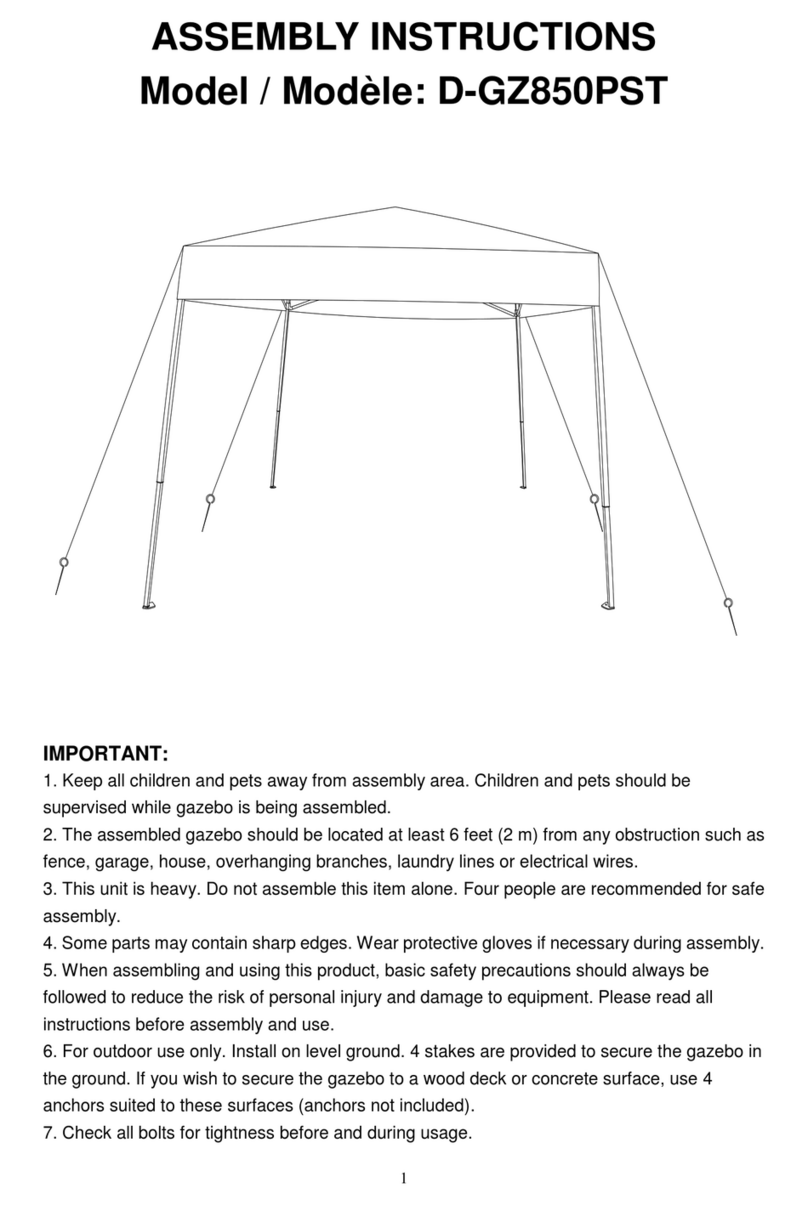
Sunjoy
Sunjoy D-GZ850PST Assembly instructions
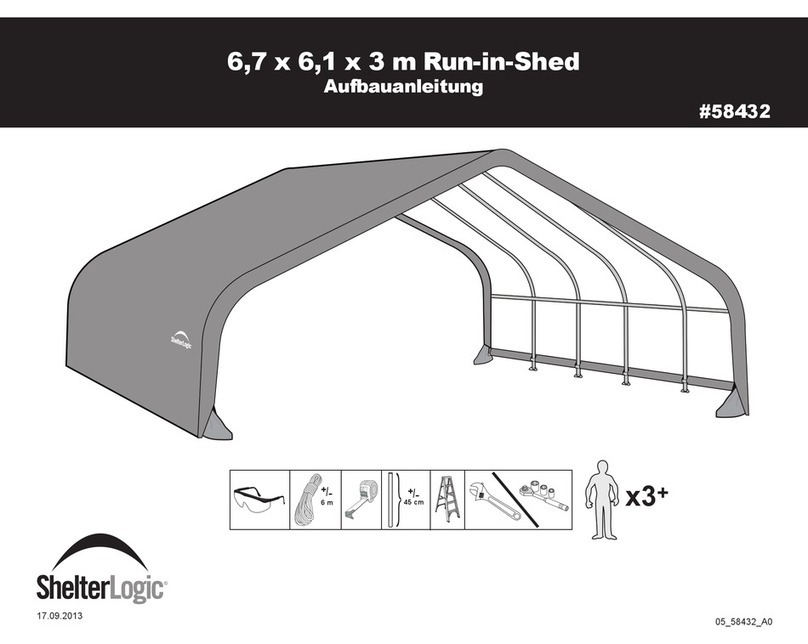
ShelterLogic
ShelterLogic 58432 Assembly & instruction manual
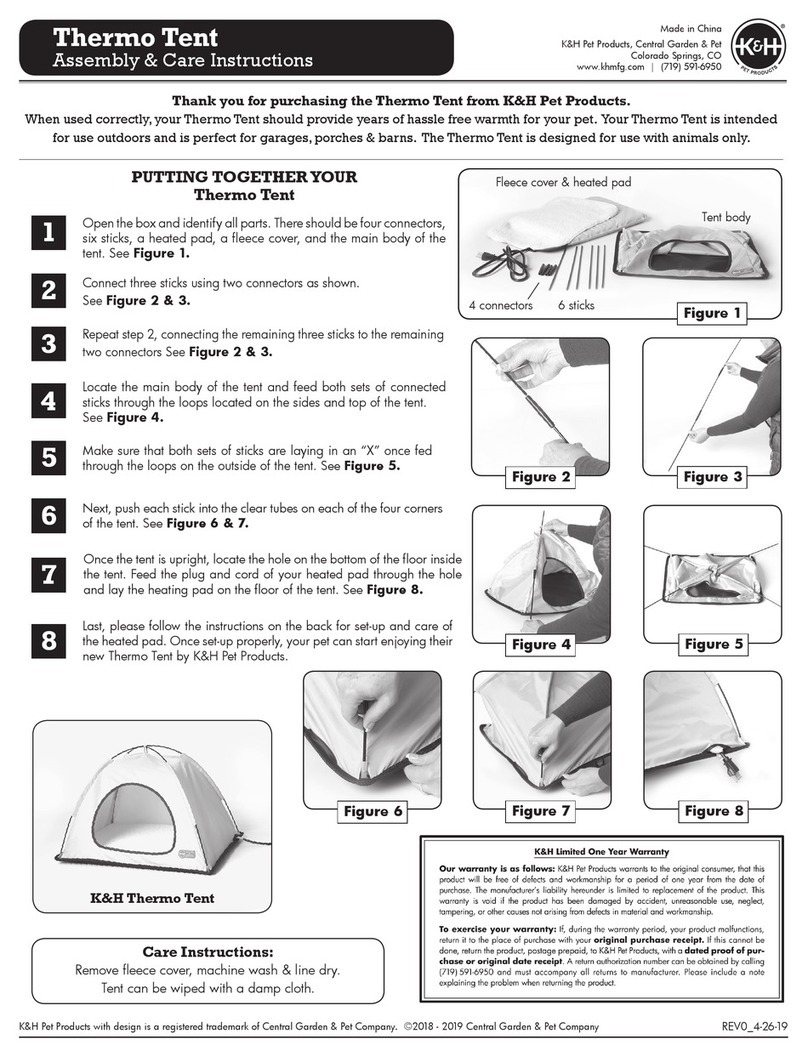
K&H
K&H Thermo Tent Assembly & care instructions

Inventini
Inventini Pascal user manual
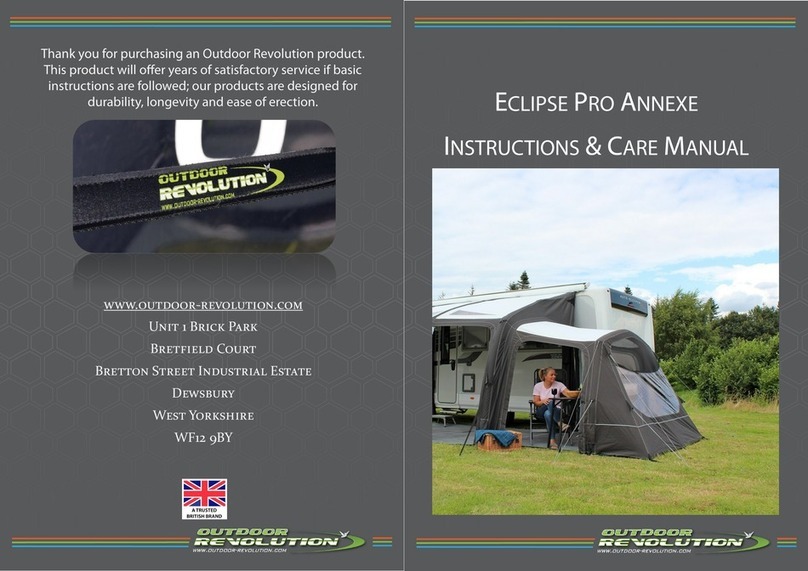
Outdoor Revolution
Outdoor Revolution Eclipse Pro Annexe Instructions & care manual
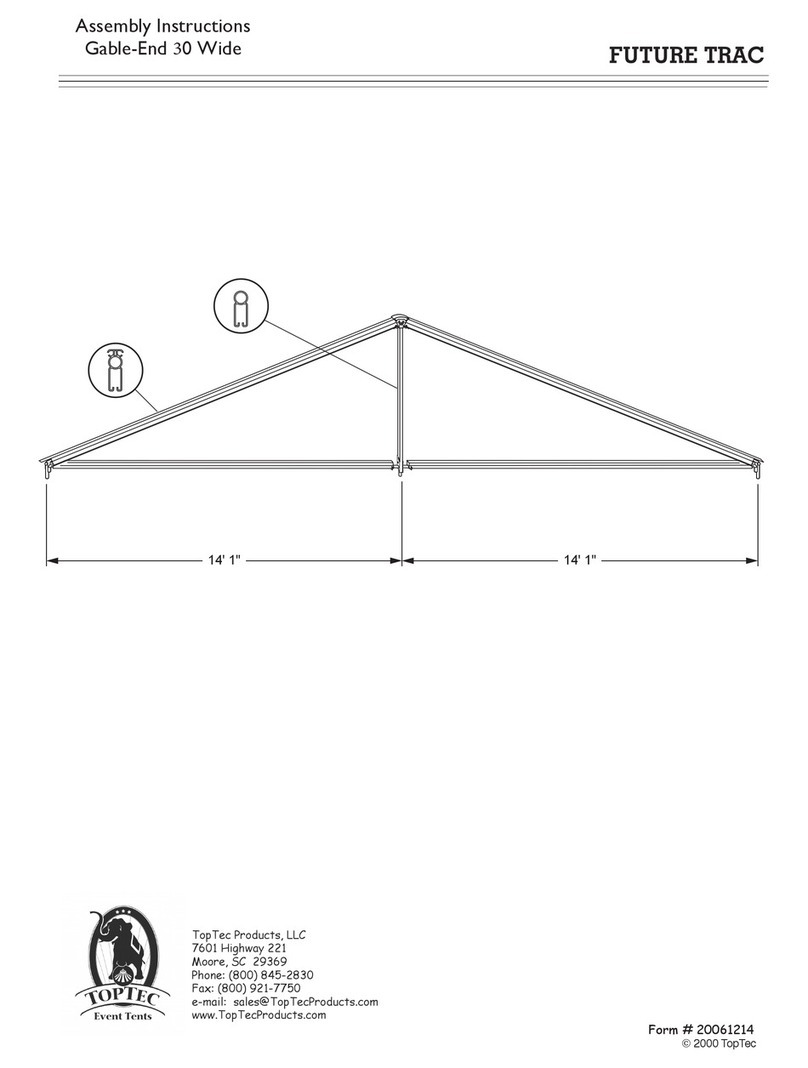
Toptec
Toptec FUTURE TRAC Gable-End Assembly instructions
